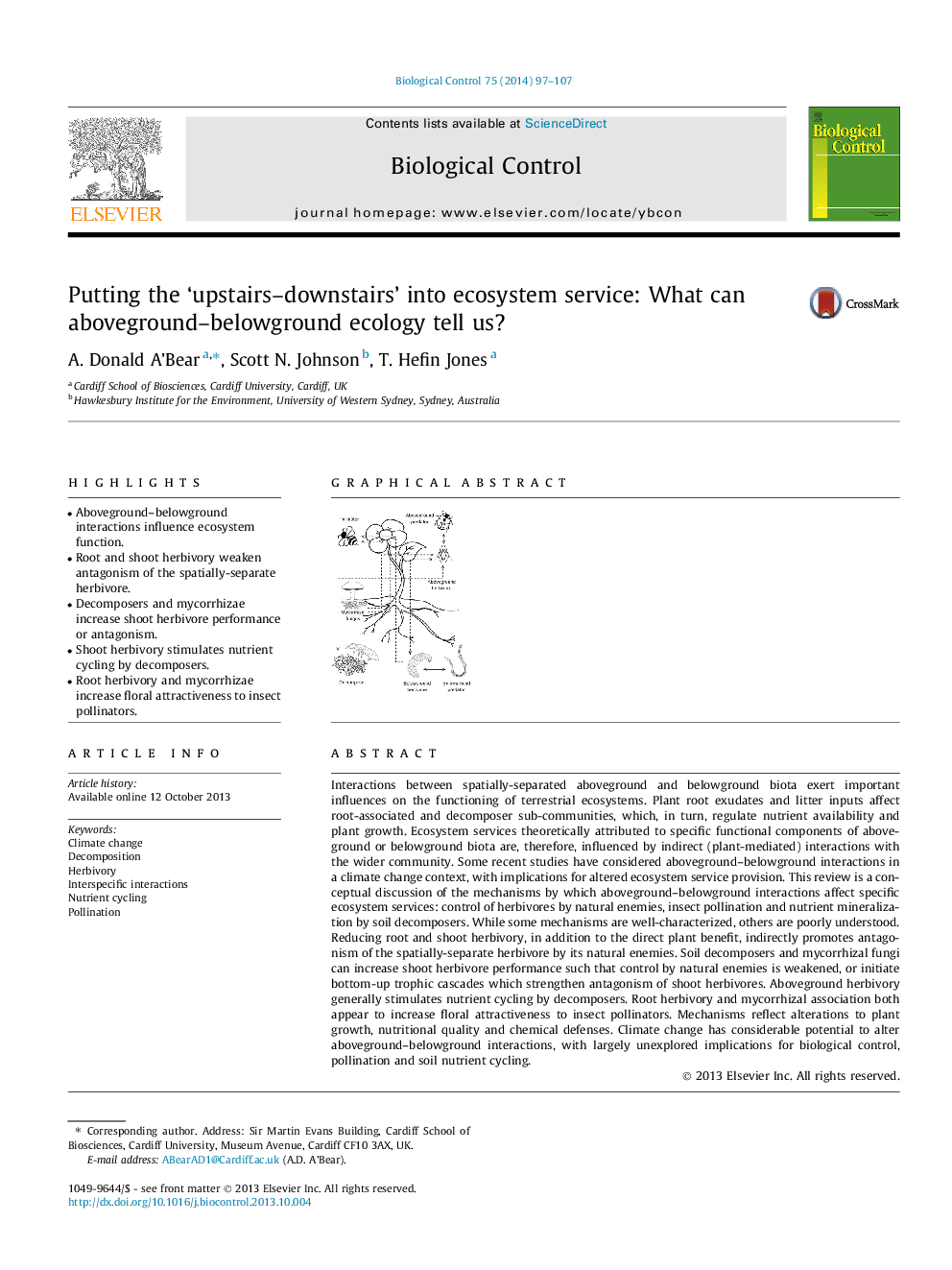| کد مقاله | کد نشریه | سال انتشار | مقاله انگلیسی | نسخه تمام متن |
|---|---|---|---|---|
| 4503907 | 1624259 | 2014 | 11 صفحه PDF | دانلود رایگان |
• Aboveground–belowground interactions influence ecosystem function.
• Root and shoot herbivory weaken antagonism of the spatially-separate herbivore.
• Decomposers and mycorrhizae increase shoot herbivore performance or antagonism.
• Shoot herbivory stimulates nutrient cycling by decomposers.
• Root herbivory and mycorrhizae increase floral attractiveness to insect pollinators.
Interactions between spatially-separated aboveground and belowground biota exert important influences on the functioning of terrestrial ecosystems. Plant root exudates and litter inputs affect root-associated and decomposer sub-communities, which, in turn, regulate nutrient availability and plant growth. Ecosystem services theoretically attributed to specific functional components of aboveground or belowground biota are, therefore, influenced by indirect (plant-mediated) interactions with the wider community. Some recent studies have considered aboveground–belowground interactions in a climate change context, with implications for altered ecosystem service provision. This review is a conceptual discussion of the mechanisms by which aboveground–belowground interactions affect specific ecosystem services: control of herbivores by natural enemies, insect pollination and nutrient mineralization by soil decomposers. While some mechanisms are well-characterized, others are poorly understood. Reducing root and shoot herbivory, in addition to the direct plant benefit, indirectly promotes antagonism of the spatially-separate herbivore by its natural enemies. Soil decomposers and mycorrhizal fungi can increase shoot herbivore performance such that control by natural enemies is weakened, or initiate bottom-up trophic cascades which strengthen antagonism of shoot herbivores. Aboveground herbivory generally stimulates nutrient cycling by decomposers. Root herbivory and mycorrhizal association both appear to increase floral attractiveness to insect pollinators. Mechanisms reflect alterations to plant growth, nutritional quality and chemical defenses. Climate change has considerable potential to alter aboveground–belowground interactions, with largely unexplored implications for biological control, pollination and soil nutrient cycling.
Figure optionsDownload as PowerPoint slide
Journal: Biological Control - Volume 75, August 2014, Pages 97–107
